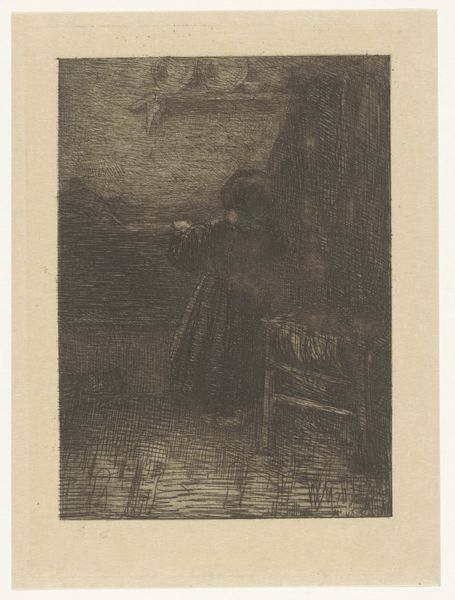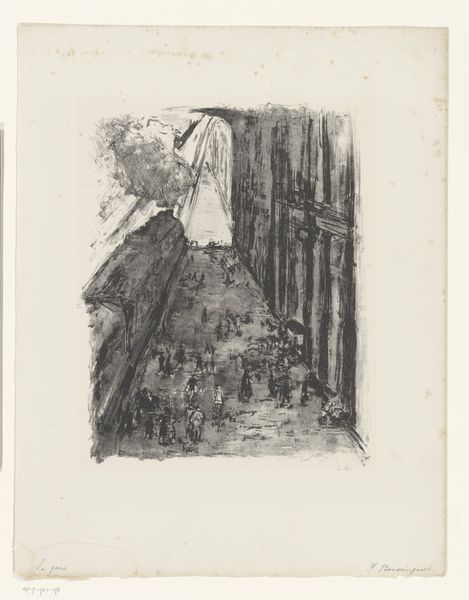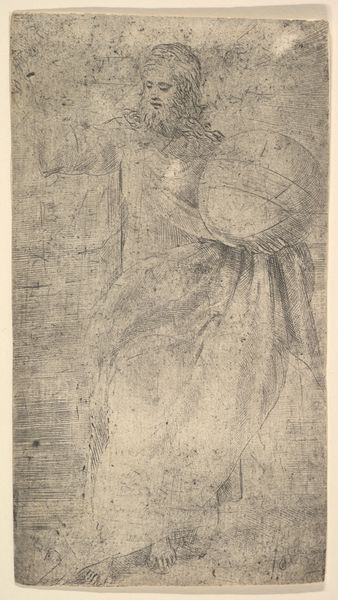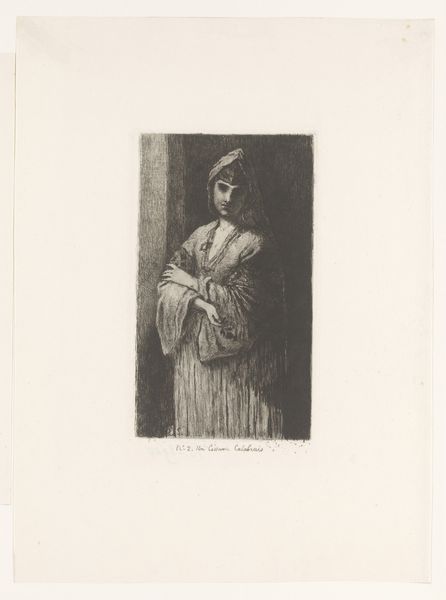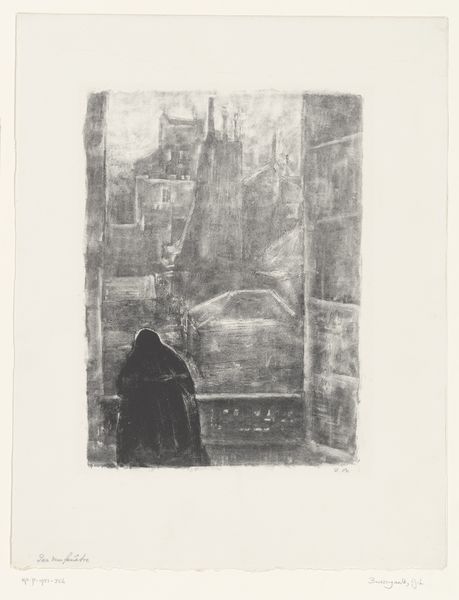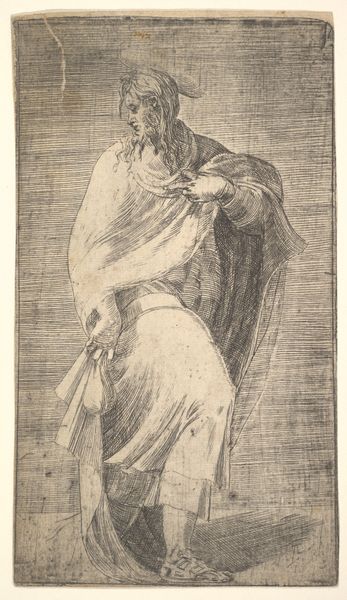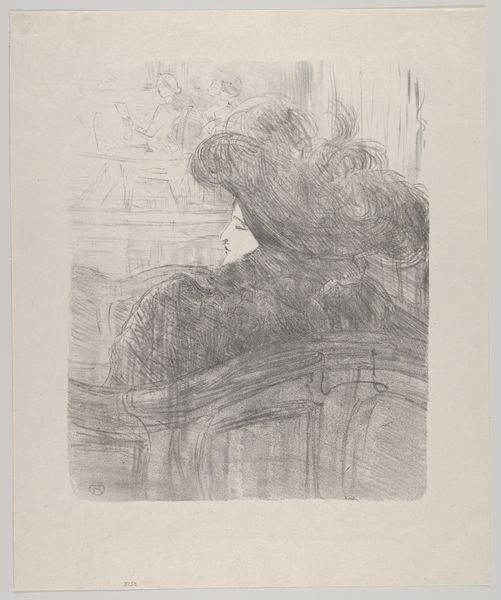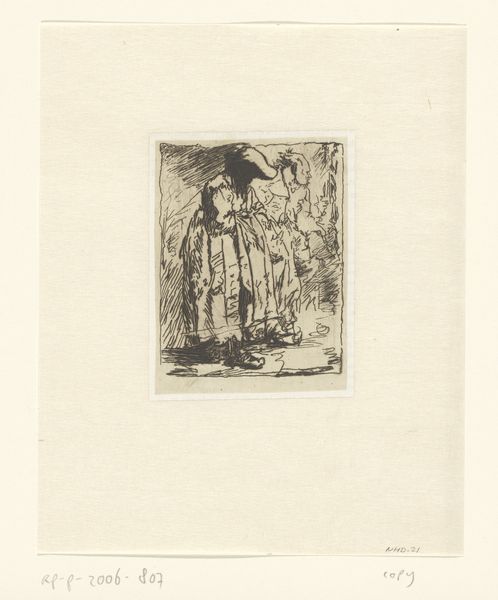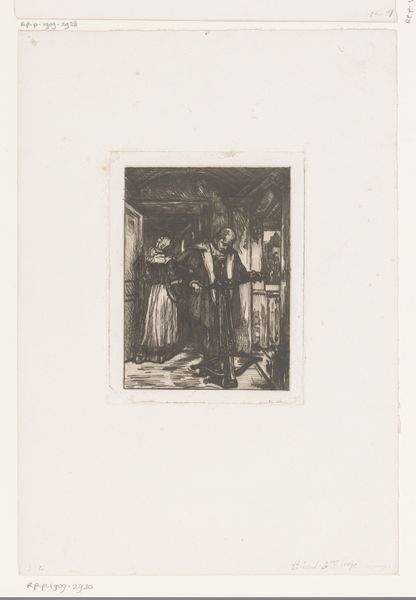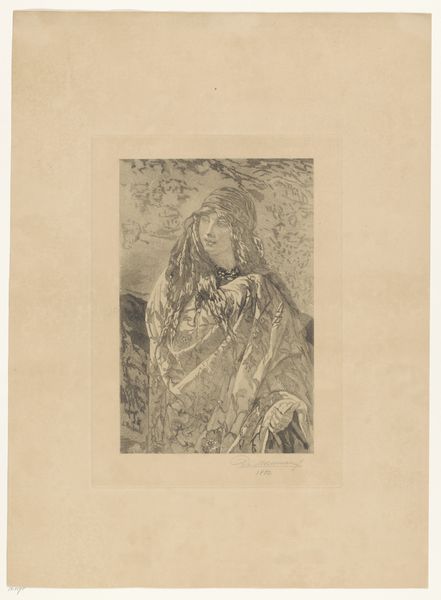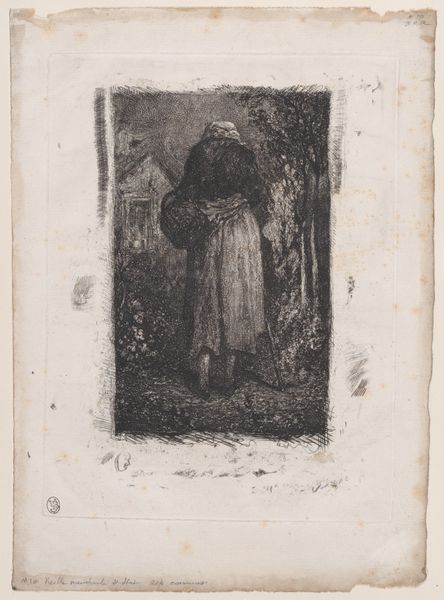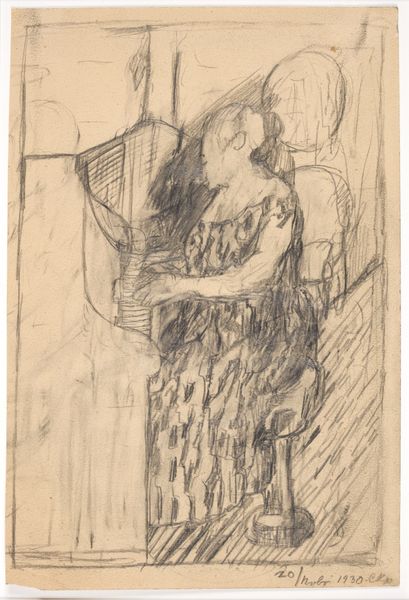
print, etching
# print
#
etching
#
landscape
#
figuration
#
orientalism
Dimensions: height 225 mm, width 142 mm
Copyright: Rijks Museum: Open Domain
Arthur-Jean Le Bailly d'Inghuem created this etching of a woman on a balustrade with a mosque in the background, likely sometime in the mid-to-late 19th century. The image speaks to a broader cultural interest in the "Orient" during this period. We see visual codes that mark the woman's otherness: her headdress, patterned robe, and the distant, exoticized architecture. Many artists of this era traveled to North Africa and the Middle East, often supported by European art institutions, seeking new subjects and styles. But, the question remains, whose perspective does this image represent? Is it an attempt at authentic cultural exchange, or does it reflect the power dynamics of colonialism? To understand the image fully, we must consider the history of Orientalism and the social conditions of artistic production in 19th-century Europe. Research into travelogues, exhibition records, and the artist's biography can shed light on these questions. Art history, at its best, examines how art is embedded in complex social and institutional contexts.
Comments
No comments
Be the first to comment and join the conversation on the ultimate creative platform.
